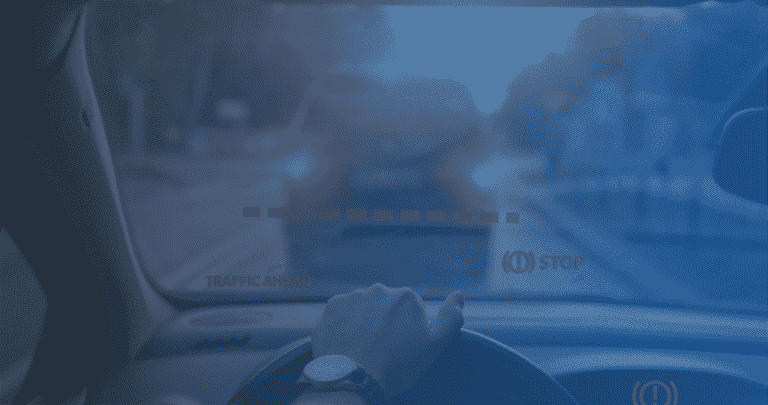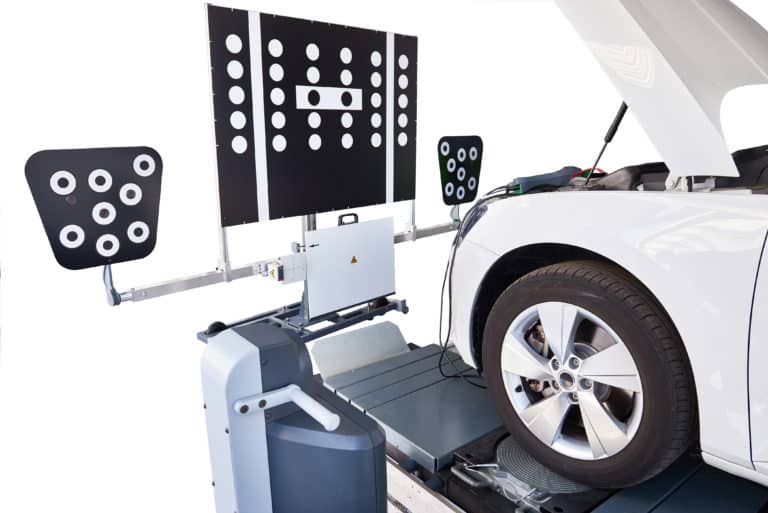One in 25 drivers admit to dozing off while behind the wheel, according to the CDC. As driver distraction and driver drowsiness continue to increase in frequency, driver assistance systems are becoming more prevalent. One of the most recent advancements in vehicle safety is the driver attention warning system. This technology is essential for preventing accidents caused by drowsy driving. The driver attention warning system actively monitors the driver’s eye position and head movements, identifying signs of fatigue or lack of attention. When the system detects indicators of drowsiness or distraction, it promptly alerts the driver to ensure their focus remains on the road. The implementation of driver attention warning system enhances road safety by addressing one of the primary causes of accidents: driver inattention
The importance of this technology is evident as driver drowsiness is one of the most significant factors in driver distraction. Thus, driver attention warning systems are becoming more common in U.S. passenger vehicles. However, as popular as they are becoming, not everyone understands how driver attention warning systems work. Therefore, we hope this guide gives you a better understanding of driver attention warning systems and their importance to you and your loved ones.
What is Driver Attention Warning/Drowsiness Detection?
Driver attention warning is an advanced driver assistance system (ADAS) that monitors driver eye and head movements for signs of drowsiness or distraction. If a possible danger is detected, driver drowsiness and attention warning will alert drivers to take action. This driver alert system could include anything from blinking their eyes more frequently as an attempt to focus back on the road ahead, moving their head to refocus their eyes, or pulling over until the driver is fully awake again.
How does Driver Attention Warning work?
There are two leading technologies for driver attention warning: driver eye monitoring and driver head movement monitoring.
Driver Eye Monitoring
Driver eye monitoring is one of the most popular driver attention warning systems. The driver eyesight cameras use infrared light to determine where a driver’s eyes are looking, in addition to how open they are and for how long. Some driver eyesight cameras will even monitor pupil size, indicating fatigue or drowsiness while driving to measure driver attention level.
By utilizing driver eye monitoring, driver attention warning can tell if a driver is looking at the road or another object in front of them. Drivers who appear distracted will receive a driver attention alert with visual warnings on vehicle instrument panels. This includes a flashing light, a driver icon on the instrument panel, or even an audible warning sound. These alerts will trigger when the driver’s eye movements do not appear to follow driving scenarios appropriately.
Driver Head Movement Monitoring
Head movement driver attention warning systems monitor head movements and alert drivers who exhibit signs of drowsiness or distraction and those who do not appear to look in the direction of travel before changing lanes.
In some driver attention warning systems, movement of the driver’s head may also help determine if they are distracted from driving activities and will trigger a driver attention alert. This can include how much the driver moves their head or how often they move their head while driving. In addition, this information can help determine if the driver is distracted from other activities in the vehicle, including cell phone use and changing radio stations.
Examples of Driver Attention Warning in U.S. Passenger Vehicles.
Most new vehicles are equipped with driver attention warning systems, but there are a few specific examples of driver attention warnings in the U.S. market today which include:
- Honda Driver Attention Monitor: The angle sensor monitors the degree of driver steering-wheel corrections to keep a stable lane position. It will notify the driver if it detects excessive correction activity. Additionally, if the system determines that the driver isn’t paying attention, it will automatically switch to an alternate screen. It will display one or two bars and a message informing them to take a break. If the detected level of attention grows worse, the system will produce a more noticeable visual warning. Addtionally, it will give an audio alert and vibrate the steering wheel to encourage driver attention.
- Toyota Driver Attention Monitor: The driver’s eyes are monitored by an infrared light source and camera to determine where the driver is looking. It accounts for how long he or she looks there and signs of lane departure or wandering in the vehicle’s travel path. If a potential problem is detected with driver gaze behavior, both audible warning sounds (beeps) and visual warning messages are displayed. The driver’s attention monitor may be configured to give a driver attention alert and sound an alarm when the driver is looking away from the road for more than three seconds or if other potentially dangerous driving behavior occurs.
- Ford Driver Alert Monitor: This driver assistance system uses a forward-facing camera mounted in the instrument cluster to detect whether the driver’s eyes are open or closed and in which direction the driver is looking. The system can determine whether a driver is too close to an object ahead to brake safely. If the driver doesn’t respond after multiple alerts over several seconds, Ford’s Adaptive Cruise Control with Collision Warning will automatically engage emergency braking to help avoid or reduce impact.
Overall, driver attention warning systems are a critical ADAS driver assistance system. The U.S. is just now adopting driver attention detection technology; however, they are quickly becoming a regular safety feature of new vehicles on roadways today.
ADAS Calibration Technology & Services
If your vehicle has driver attention warning, it likely has multiple ADAS features that rely on ADAS calibration. This includes automatic emergency braking, lane keep assist, or forward collision warning. For ADAS-equipped vehicles, calibration is the process of re-aligning a vehicle’s ADAS sensors. This is due to a change in position due to alignment, suspension, windshield replacement, and collisions. These re-calibrations are essential to ADAS operation. In the coming years, a growing number of vehicles will regularly need ADAS calibration. Few auto repair shops are ready to handle the influx.
At Car ADAS Solutions, we provide the turn-key solution, enabling you to open and operate ADAS calibration centers. Through our unique partnerships with ADAS industry leaders, we help take the unknown out of implementing ADAS calibrations. We provide ADAS technician training, site certification, management software and ongoing support.
Need a solution for ADAS calibrations? Consider owning your own calibration center.
Driver Attention Warning FAQ
What does the Driver Attention Warning system do?
The Driver Attention Warning system actively monitors the driver’s focus and engagement by analyzing eye movement and head position. If it detects signs of fatigue or distraction, it issues alerts to encourage the driver to regain attention or take a break.
What technology is used in Driver Attention Warning systems?
Driver Attention Warning systems generally use a combination of cameras, infrared sensors, and software algorithms to track eye gaze, eyelid position, and head orientation to assess the driver’s alertness.
What makes calibrating the Driver Attention Warning system essential?
ADAS calibration is crucial for Driver Attention Warning systems because it ensures the sensors and cameras are precisely aligned and functioning accurately, which is vital for the system to correctly identify inattention and provide timely alerts.
How often is calibration of the Driver Attention Warning system required?
Calibration should be performed whenever there’s a potential impact on the vehicle’s sensor alignment, such as a windshield replacement, significant body repairs, or any modifications that could shift the position of sensors.







